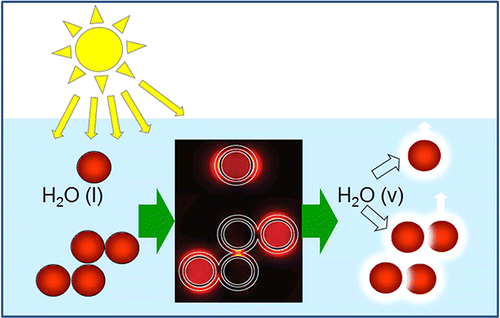- Forum
- categories
- Sanitation systems
- Faecal sludge management (FSM)
- Faecal sludge treatment technologies
- Pathogen removal during faecal sludge treatment
- Solar steam sterilizer for treatment of human waste (Rice University, USA)
Solar steam sterilizer for treatment of human waste (Rice University, USA)
8840 views
- gitum
-

- Environmental Engineer pursuing PhD at Technical University of Munich
Less- Posts: 14
- Karma: 2
- Likes received: 4
Re: Solar steam sterilizer for treatment of human waste (Rice University, USA)
It is a very interesting project, thank you for sharing with us. In addition to the previously asked questions by Asad (please scroll up), I also would like to ask a question. You mention Kenya as a possible test case. As Kenya is classified among the most water scarce countries in the world, I would like to ask how much water is needed for the system (to generate the steam) in litres per person per day. Which water sources are you planning to use in your target area in Kenya? I can imagine that you have evaluated rainwater or groundwater (or even surface water?). Is the amount of rainfall sufficient or have you encountered any difficulties for groundwater usage (such as salt content, pollutants etc.)? Or are you planning to benefit from a different water source?
Also, you said that the final report was due 15 June. Would you be willing to share this report with us on the forum? That would be great. And how is it going with your Phase 2 application? Do you already know if you have been successful with it?
Thank you,
Gökce
Research Assistant
Technical University of Munich
e-mail: This email address is being protected from spambots. You need JavaScript enabled to view it.
www.tum-ias.de
www.sww.bv.tum.de
Please Log in to join the conversation.
You need to login to reply- ak00133
-
 Less
Less- Posts: 1
- Likes received: 0
Re: Solar steam sterilizer for treatment of human waste (Rice University, USA)
Thank you for sharing this project, indeed it looks like the most promising way for small scale waste treatment. A few questions:
1) Is perhaps trying to test for the destruction of Geobacillus
stearothermophilus an overkill, is it often present in fecal sludge?
Maybe treatment times could be reduced if you test for ascaris lumbricoides which seems to be the most resilient helminth present.
2)You have measured temperatures at the top and bottome of the treatment vessel, how does this relate to the temperature in say the center of the waste?
3) Can steam or hot water be produced to pipe underneath a solar drying bed and accelerate evaporation. Therefore the end waste could be used as a fertiliser.
4) Does the steam condense inside the vessel and increase its volume. This may cause transportation issues.
Kind regards
Asad
University of Surrey
Undertaking project with 'Water for People' on solar sludge treatment.
Please Log in to join the conversation.
You need to login to reply- njhalas
-
 Topic AuthorLess
Topic AuthorLess- Posts: 2
- Likes received: 1
Re: Reply: Solar steam sterilizer for treatment of human waste (Rice University, USA)
The truth about nanoparticles is that there are many safe ones. The particles in our application are completely benign, but that is besides the point since they remain in the solar steam generator anyway.
Naomi J. Halas
Please Log in to join the conversation.
You need to login to replyRe: Solar steam sterilizer for treatment of human waste (Rice University, USA)
Thanks for your post, this seems quite interesting. Some questions that I have:
1.) Do you need to refill the nano particles, i.e. do they stay in the system or are they "consumed" / leaked?
2.) If the second, are there any health risks associated with nano particles? (Thinking along the lines of asbestos here.)
Kind regards
Marijn Zandee
E: This email address is being protected from spambots. You need JavaScript enabled to view it.
Please Log in to join the conversation.
You need to login to reply- njhalas
-
 Topic AuthorLess
Topic AuthorLess- Posts: 2
- Likes received: 1
Solar steam sterilizer for treatment of human waste (Rice University, USA)
A description of my research grant from the Bill & Melinda Gates Foundation is given below and I welcome your feedback and questions.
Title of grant: A Solar Steam Sterilizer for treatment of human waste
Subtitle: Rapid transfer of a new scientific discovery into a better sanitation technology for the developing world
Name of lead organization: Rice University
Primary contact at lead organization: Naomi Halas
Grantee location: Houston, Texas, USA
Developing country where the research is being or will be tested: Currently in the US, we are proposing sites in Kenya in collaboration with Sanivation (Phase II, to be submitted).
Short description of the project:
Solar steam generation, a recent discovery from the Halas lab at Rice University, is the technological breakthrough upon which this project is based. Light-absorbing nanoparticles, when dispersed in water and illuminated by sunlight, produce steam with only secondary heating of the fluid volume: more than 80% of the solar energy absorbed by the nanoparticles is converted directly into steam, with less than 20% contributing to residual fluid heating. Due to its unparalleled high efficiency, this process produces high temperature steam rapidly, in compact, standalone geometries extremely well-suited for applications in the developing world. The nanoparticles are inexpensive, industrially produced carbon particles, and are not consumed in the steam generation process. The only input other than solar energy is water, which need not be sterilized prior to use.
Goal(s):
The goal of this project is to design and build a Solar Steam Sterilizer specifically for the processing of human excreta in resource-constrained locations.
Objectives: In Phase I we demonstrated a compact, standalone solar steam generator-driven autoclave capable of delivering high temperature steam (>130oC) for the sterilization of human waste. The prototype unit is capable of sterilizing a 14 liter volume of waste in 5 minutes (30 minute total cycling time). Both the short cycle time and the quality of the sterilized output “product” establish a new standard far above existing waste remediation methods.
Start and end date: end date 30 April 2013, final report due 15 June 2013 (edit on 10 Nov. 2014: the project got further funding and is now running until 30 April 2015)
Grant type: GCE R7
Research or implementation partners: Sanivation (edit on 14 Oct. 2014: planned but did not take place) and EurekaSun
Links, further readings – results to date: We currently have one published article on Solar Steam:
Oara Neumann, Alexander S. Urban, Jared Day, Surbhi Lal, Peter Nordlander, and N. J. Halas, “Solar Vapor Generation enabled by nanoparticles”, ACS Nano 7, 42-49 (2013). pubs.acs.org/doi/abs/10.1021/nn304948h
Abstract:
Solar illumination of broadly absorbing metal or carbon nanoparticles dispersed in a liquid produces vapor without the requirement of heating the fluid volume. When particles are dispersed in water at ambient temperature, energy is directed primarily to vaporization of water into steam, with a much smaller fraction resulting in heating of the fluid. Sunlight-illuminated particles can also drive H2O–ethanol distillation, yielding fractions significantly richer in ethanol content than simple thermal distillation. These phenomena can also enable important compact solar applications such as sterilization of waste and surgical instruments in resource-poor locations.
This article was the top downloaded article of all ACS journal in the first three months it was posted online.
Please see also this poster which gives further results of our research (we presented this at the Reinvent the Toilet Fair last August in Seattle):
Please log in or register to see it.
Kind regards,
Naomi
++++++++++++++
Naomi J. Halas
Stanley C. Moore Professor of Electrical and Computer Engineering
Professor of Physics and Astronomy
Professor of Chemistry
Professor of Bioengineering
Rice University
6100 Main St.
Houston, TX, USA
Attachments:
-
 nn-2012-04...0006.gif
(Filesize: 51KB)
nn-2012-04...0006.gif
(Filesize: 51KB)
Please Log in to join the conversation.
You need to login to reply- Forum
- categories
- Sanitation systems
- Faecal sludge management (FSM)
- Faecal sludge treatment technologies
- Pathogen removal during faecal sludge treatment
- Solar steam sterilizer for treatment of human waste (Rice University, USA)








